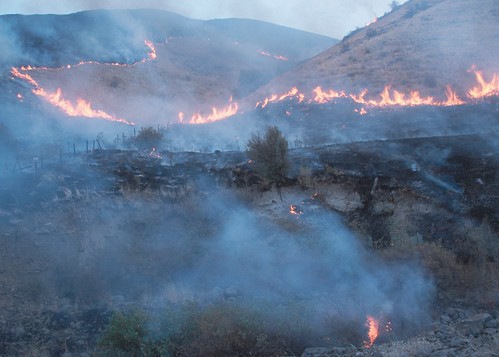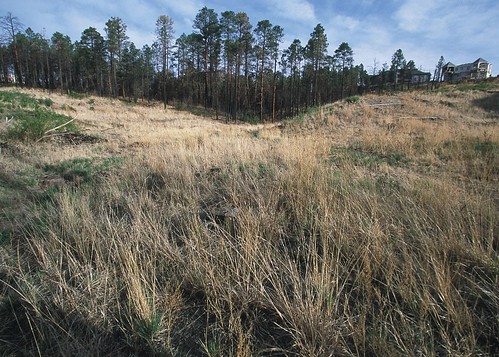

Traveling at speeds up to 14 mph, wildfires can quickly ravish landscapes and homesteads. Experts with USDA’s Natural Resources Conservation Service, (NRCS) are studying what plants can slow fire rather than fuel it.
NRCS’ Plant Materials Centers evaluate and study plants, including those that can reduce fire damage or losses, helping keep people, property and natural resources safe. These centers, located across the United States, can provide information on the type plant best suited for an area given factors such as geography and climate.
“All plants burn, but using the right management and plant materials gives you a better chance of lessening damage,” said Jim Jacobs, NRCS plant materials specialist for Montana and Wyoming.
“Weather, topography and fuels dictate fire behavior,” Jacobs said. “A landowner can only control the type and amount of plant fuels, so the focus should be on managing what you can manage.”
A perimeter or firebreak of about 30 feet should be created around homes and other buildings. This area can be created by planting low-stature grasses or perennial herbaceous plants and shrubs. Plants in the 30-foot area should be kept green, since green plants don’t burn as hot and can buffer buildings from the heat’s intensity. Plant maintenance is an important preventive step. Pruning trees and shrubs, mowing, and keeping dead material out of the perimeter will decrease fuel load around structures.
If planting trees, they should be planted far enough away that their canopy doesn’t grow within 10 feet of a building. Trees that hold more moisture are better than trees containing resin, such as pines, because they won’t burn as fast or as hot. Trees can also help block heat, slow wind and intercept embers, which are the main causes of structural fires and costliest part of wildfires.
In shelterbelts and wind breaks, farmers and ranchers should work to reduce what’s known as ladder fuels or plants that enable fire to climb from the ground into canopies. Keeping fires out of tree canopies helps reduce the number of embers in the air.
“Wildfires race across fields, so farmers and ranchers don’t have time to react,” Jacobs said. “At that point, it’s left to the preparation and management of your plant materials to help protect you and your structures.”
On wild lands, low- and moderate-intensity ground fires actually help forests by rejuvenating understory growth. But high-intensity fires can kill the entire plant leaving the soil bare, which increases the chances of erosion and flash flooding. In order to stabilize the soil and provide food and shelter for wildlife, landowners should reseed with grasses that establish quickly.
The Plant Materials Center in Aberdeen, Idaho is supporting post-fire reseeding management by providing foundation seeds to the commercial seed industry. These foundation seeds come from plants that are evaluated to ensure establishment and performance under specific conditions, such as post fire.
“Firefighters aren’t our only defense to fires. Simply by using the right plants and management, we’re dispatching another type of preventive firefighter,” Jacobs said.
Several guides and resources on planning homes and landscapes are available on the NRCS website and your local NRCS field office.



